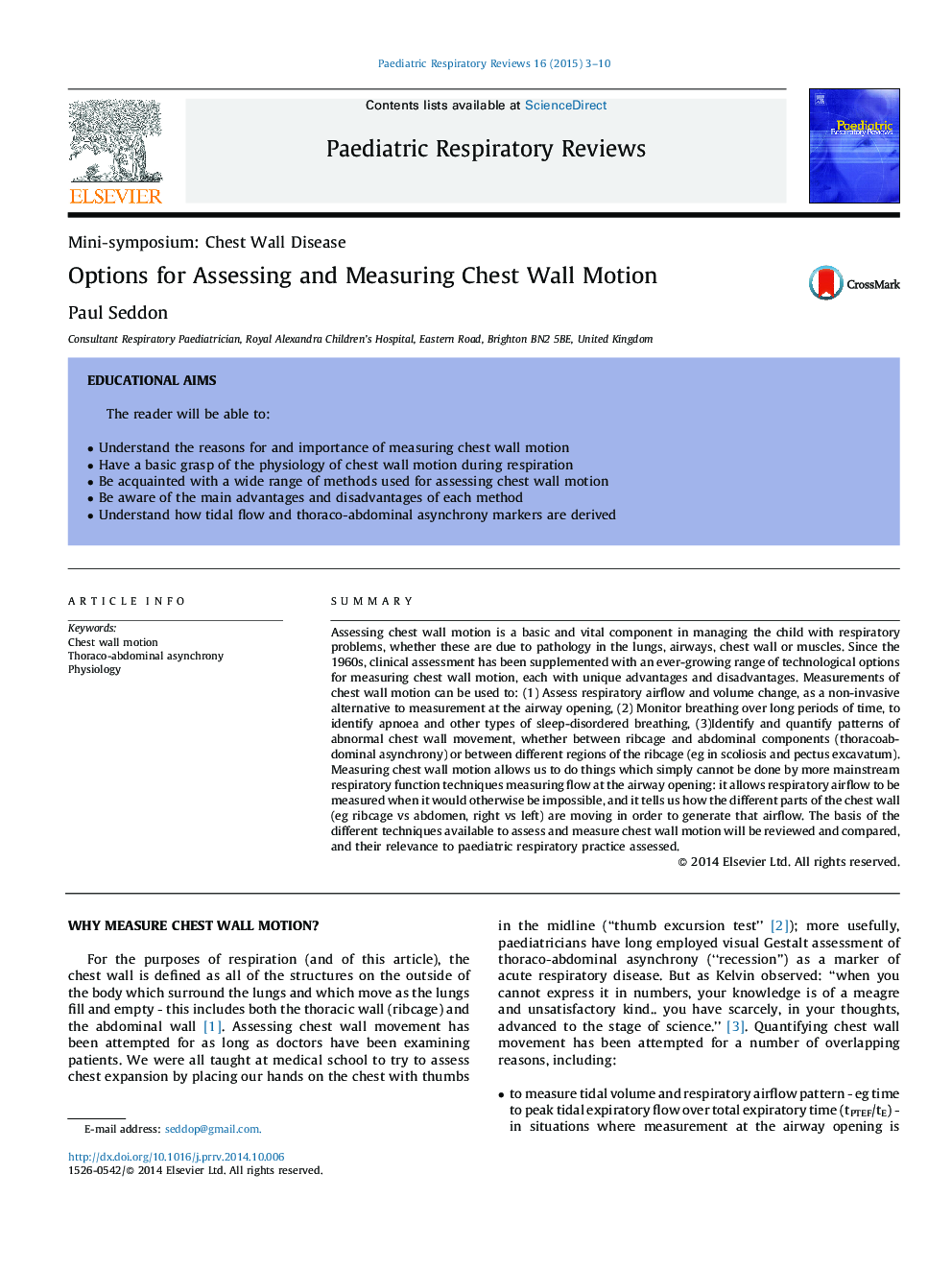| کد مقاله | کد نشریه | سال انتشار | مقاله انگلیسی | نسخه تمام متن |
|---|---|---|---|---|
| 4170957 | 1275636 | 2015 | 8 صفحه PDF | دانلود رایگان |
SummaryAssessing chest wall motion is a basic and vital component in managing the child with respiratory problems, whether these are due to pathology in the lungs, airways, chest wall or muscles. Since the 1960s, clinical assessment has been supplemented with an ever-growing range of technological options for measuring chest wall motion, each with unique advantages and disadvantages. Measurements of chest wall motion can be used to: (1) Assess respiratory airflow and volume change, as a non-invasive alternative to measurement at the airway opening, (2) Monitor breathing over long periods of time, to identify apnoea and other types of sleep-disordered breathing, (3)Identify and quantify patterns of abnormal chest wall movement, whether between ribcage and abdominal components (thoracoabdominal asynchrony) or between different regions of the ribcage (eg in scoliosis and pectus excavatum). Measuring chest wall motion allows us to do things which simply cannot be done by more mainstream respiratory function techniques measuring flow at the airway opening: it allows respiratory airflow to be measured when it would otherwise be impossible, and it tells us how the different parts of the chest wall (eg ribcage vs abdomen, right vs left) are moving in order to generate that airflow. The basis of the different techniques available to assess and measure chest wall motion will be reviewed and compared, and their relevance to paediatric respiratory practice assessed.
Journal: Paediatric Respiratory Reviews - Volume 16, Issue 1, January 2015, Pages 3–10
